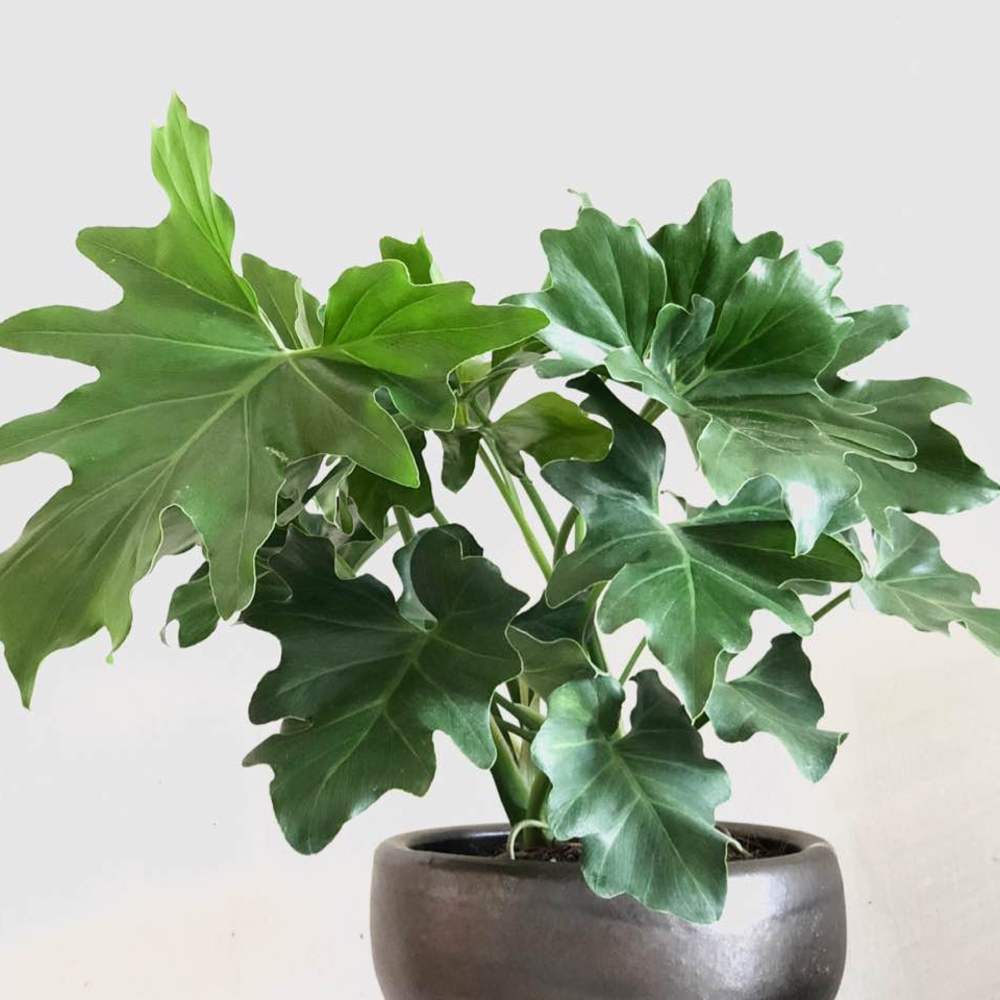植物经验
详细说明
Indoors, the easy-care, self-heading Philodendron Selloum takes up a lot of space, often spreading 5ft. or more with 2ft.-3ft. leaves. The dark green, shiny leaves are large and deeply lobed. A Selloum does grow a trunk as it matures, but the huge drooping leaves usually hide it.
These plants are considered poisonous and should be kept away from pets and children.
LIGHT
A Philodendron Selloum grows well in bright indirect light. In lower light, the leaves turn a darker green; direct sun or too much light burns or fades the leaves.
WATER
Unlike other Philodendrons, the Philodendron Selloum likes moist but not soggy soil. During the winter, water less often, keeping the soil barely moist.
FERTILIZER
Feed a Philodendron Selloum monthly during the spring, summer, and fall with a water-soluble fertilizer diluted to ½ the recommended strength. Too much plant food causes excess salt build up in the soil that can result in leaf burn.
TEMPERATURE
Philodendron Selloums like warm temperatures above 55 degrees. Keep them away from drafts and open doors especially during the winter.
HUMIDITY
A Philodendron Selloum, a type of tree philodendron, has thinner leaves than many of its relatives and requires a more humid environment to flourish. If your home or office is very dry in the winter, place your Philodendron Selloum near a humidifier or sit it on a wet pebble tray.
FLOWERING
It takes about 15-20 years for a mature Philodendron Selloum to flower; and it rarely flowers indoors. The pedal-less flowers of a Philodendron Selloum are enclosed in a spathe, a modified leaf, which is often mistaken for the flower itself.
PESTS
Plant insects such as Aphids, Mealy Bugs, scale, and spider mites can be a problem. If any of these plant pests infect your Selloum, spray the entire plant with warm soapy water or the green solution. Scrape off scale with a child’s toothbrush.
DISEASES
Bacterial Blight can infect a Philodendron Selloum, causing small very dark green blotches on leaves that expand rapidly. Infected leaves eventually rot and die, becoming quite smelly in the process. The best way to prevent Bacterial Blight is to keep the leaves dry at all times, avoid overhead watering, and immediately remove any infected leaves.
SOIL
A Philodendron Selloum grows best in rich, slightly alkaline soil that retains moisture. The leaf tips of a Philodendron Selloum burn if there is too much salt in the soil usually due to over-feeding.
POT SIZE
You can tell it's time to move your Philodendron Selloum to a larger pot when the roots have filled the existing pot. The new container should be only 1"-2" wider and deeper than the previous container.
PRUNING
Prune a Philodendron Selloum with sharp pruners or scissors to control its size and shape. You can remove entire leaves be cutting them off at the base of the leaf stem. You can remove the lower leaves if you want to reveal the plant's stem. Wear gloves when pruning a Philodendron Selloum and wash your hands and tools when finished, you don't want to get the sap in your eyes or mouth.
PROPAGATION
Propagate a Philodendron Selloum from stem cuttings. Dip the cut end of the stem in a little Rooting Hormone to increase the chance of success.
These plants are considered poisonous and should be kept away from pets and children.
LIGHT
A Philodendron Selloum grows well in bright indirect light. In lower light, the leaves turn a darker green; direct sun or too much light burns or fades the leaves.
WATER
Unlike other Philodendrons, the Philodendron Selloum likes moist but not soggy soil. During the winter, water less often, keeping the soil barely moist.
FERTILIZER
Feed a Philodendron Selloum monthly during the spring, summer, and fall with a water-soluble fertilizer diluted to ½ the recommended strength. Too much plant food causes excess salt build up in the soil that can result in leaf burn.
TEMPERATURE
Philodendron Selloums like warm temperatures above 55 degrees. Keep them away from drafts and open doors especially during the winter.
HUMIDITY
A Philodendron Selloum, a type of tree philodendron, has thinner leaves than many of its relatives and requires a more humid environment to flourish. If your home or office is very dry in the winter, place your Philodendron Selloum near a humidifier or sit it on a wet pebble tray.
FLOWERING
It takes about 15-20 years for a mature Philodendron Selloum to flower; and it rarely flowers indoors. The pedal-less flowers of a Philodendron Selloum are enclosed in a spathe, a modified leaf, which is often mistaken for the flower itself.
PESTS
Plant insects such as Aphids, Mealy Bugs, scale, and spider mites can be a problem. If any of these plant pests infect your Selloum, spray the entire plant with warm soapy water or the green solution. Scrape off scale with a child’s toothbrush.
DISEASES
Bacterial Blight can infect a Philodendron Selloum, causing small very dark green blotches on leaves that expand rapidly. Infected leaves eventually rot and die, becoming quite smelly in the process. The best way to prevent Bacterial Blight is to keep the leaves dry at all times, avoid overhead watering, and immediately remove any infected leaves.
SOIL
A Philodendron Selloum grows best in rich, slightly alkaline soil that retains moisture. The leaf tips of a Philodendron Selloum burn if there is too much salt in the soil usually due to over-feeding.
POT SIZE
You can tell it's time to move your Philodendron Selloum to a larger pot when the roots have filled the existing pot. The new container should be only 1"-2" wider and deeper than the previous container.
PRUNING
Prune a Philodendron Selloum with sharp pruners or scissors to control its size and shape. You can remove entire leaves be cutting them off at the base of the leaf stem. You can remove the lower leaves if you want to reveal the plant's stem. Wear gloves when pruning a Philodendron Selloum and wash your hands and tools when finished, you don't want to get the sap in your eyes or mouth.
PROPAGATION
Propagate a Philodendron Selloum from stem cuttings. Dip the cut end of the stem in a little Rooting Hormone to increase the chance of success.
花相册 (7)
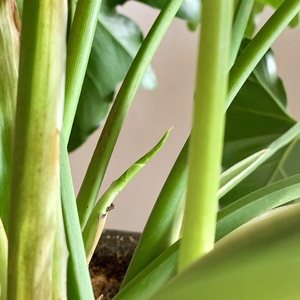

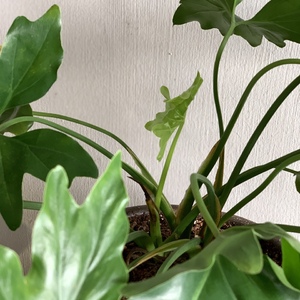
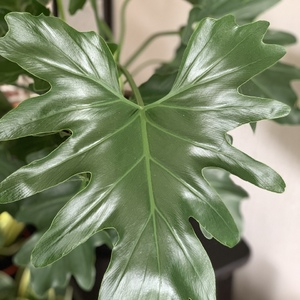
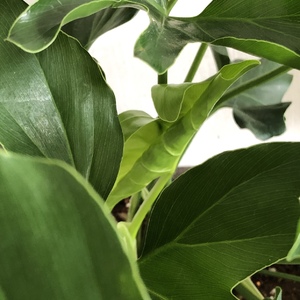
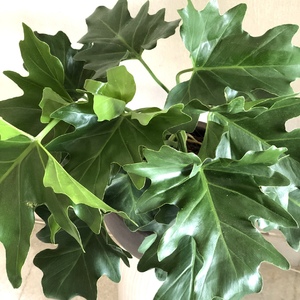
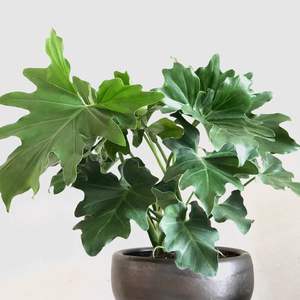
kensong
2019年04月30日

Has stopped putting out new leaves and now suddenly a growth spurt.






kensong
2018年11月14日

Big new leaf!


kensong
2018年10月08日

Hello new leaf unfurls.


kensong
2018年09月20日

Philodendron Selloum or Tree Philodendron.


kensong
2018年09月20日

This is my first growing diary. From Sharifah RM90.00




